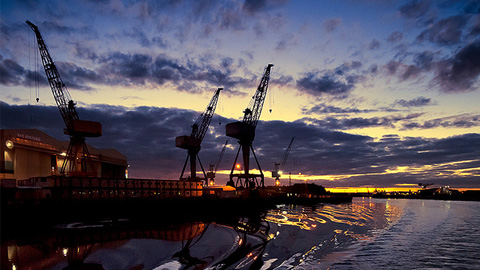Baltic Maritime Clusters to Join Forces
While Asian giants rule the global maritime industry, Baltic maritime clusters should seek new opportunities together.

The global maritime industry has faced a rapid change. In Finland, the whole country mourns the loss of an American cruiser order to France. The future of the Finnish industry seems to be at stake.
In the University of Turku, there are dozens of research projects that study the maritime industry and the whole sector from different aspects. How does the situation look like?
‒ The maritime industry has changed rapidly. The front runners come from the Far East ‒ the Asian giants are here. Big time, says Researcher Eini Laaksonen.
She studies the competitive edge of the Central Baltic region’s maritime clusters in a project called Smart Comp that seeks new opportunities for the Finnish, Swedish, Estonian, and Latvian maritime clusters.
The project aims to improve their competitive edge in relation to the Eastern competitors. In China alone, the maritime industry has multiplied over the last decade.
‒ The new players have really mixed things up like never before. Now, we in the Baltic region have to be able to cooperate. It`s not worthwhile for the small players to compete with each other. If they do just that, everyone is in trouble.
Competitive Edge from the Unique Know-how
For the most part, the Central Baltic region’s maritime clusters operate apart from each other. They do, however, have many similarities. Among other things, all the clusters face new requirements of environmental protection, the rising cost levels, and the lack of accomplished labour force in the near future.
In addition to these challenges, they share possibilities; the most significant being the proximity of Russia and its growing maritime cluster.
‒ Growing sea traffic in the Baltic, opening of the North-East Passage, and increase in offshore operations will all create business possibilities for the Central Baltic. By now, local businesses should be getting ready by creating ensembles that attract buyers looking for easy access to their know-how.
Businesses in the Central Baltic countries have a lot of unique know-how to export globally, too. For example, innovations developed for lowering the sulphur emissions on the Baltic are a good example of technologies predicted to be global success stories.
‒ It is certain that the environment will meet its boundaries elsewhere, too. Baltic businesses must actively take their know-how where there is demand for it. This will also enable maintaining the know-how in the region while the order situation see-saws.
R&D One Jump Ahead
The project demands ability to change not only from businesses but also from decision-making and public administration, which according to Laaksonen should also commit to seeing beyond the current difficulties.
‒ The news are overpowering right now, but research and development should stay one step ahead. Know-how, the core of competitive edge, comes from the businesses, but a vital network is built in close cooperation.
>> Read more about the SmartComp project
Text: Taru Suhonen
Photo: baaker2009